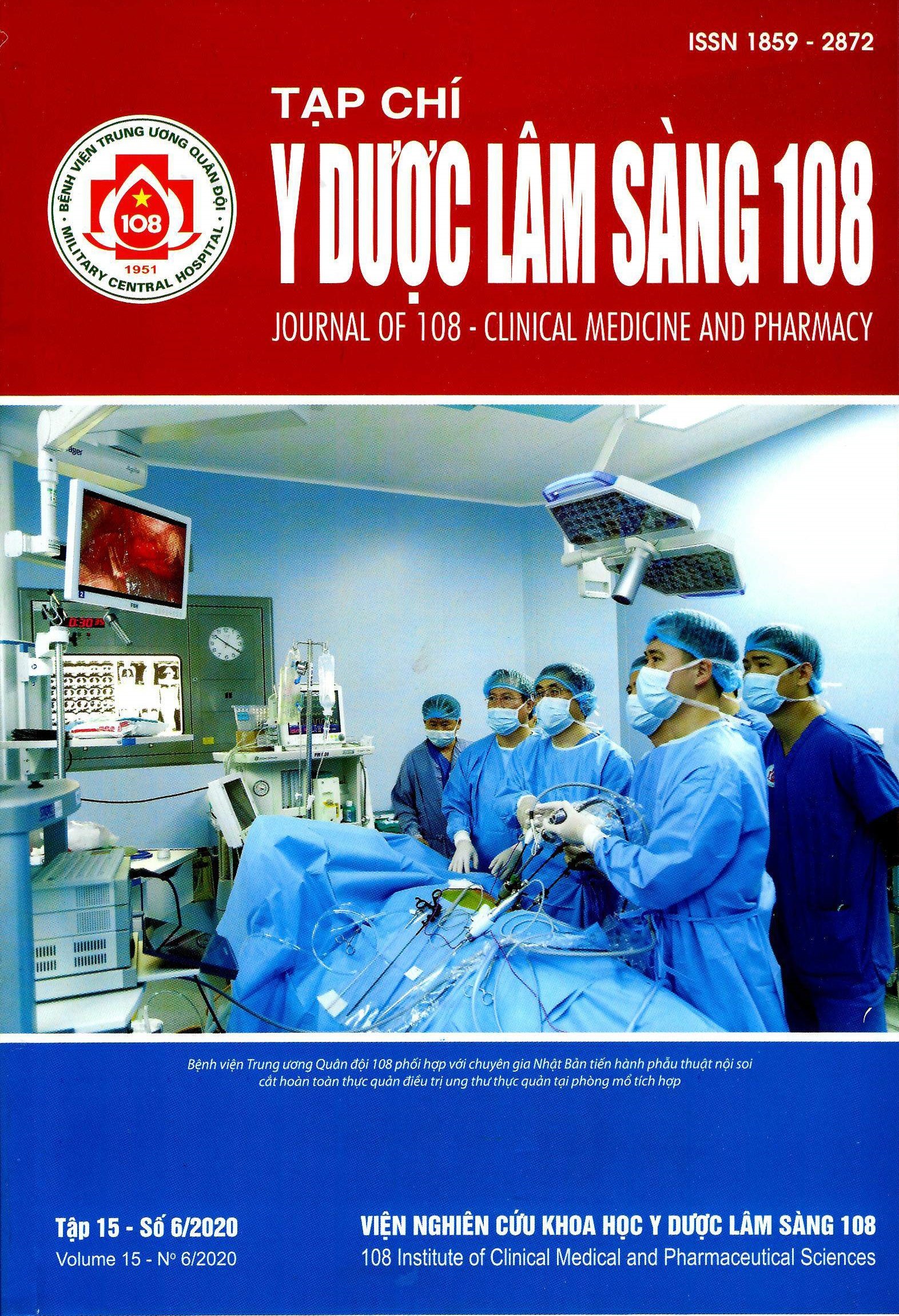Relationship between serum alpha fetoprotein with tumor characteristics and stage in patients with HBV-associated hepatocellular carcinoma
Main Article Content
Keywords
Abstract
Objective: To determine the relationship between serum alpha fetoprotein (AFP) with some tumor characteristics and stage in patients with hepatitis B virus (HBV) - associated hepatocellular carcinoma (HCC). Subject and method: The prospective, cross-sectional descriptive study carried out on 180 patients with HCC with HBsAg (+) in Digestive Department of 103 Military Hospital. Serum AFP concentration was determined by chemiluminescence immunoassay. Tumor characteristics was diagnosed on imaging studies. Result: In patients with HBV-associated HCC, the increase in serum AFP above 20ng/mL accounted for 65.5%, intermediate stage (60.0%), tumor size over 5cm (79.8%), nodular and massive form (66.1%) and portal vein thrombose (19.4%). Serum AFP concentration was increased parallelly with tumor size and BCLC stage. Conclusion: There is the significant relationship between serum AFP with tumor size and Barcelona staging classification for HCC.
Article Details
References
2. Thái Doãn Kỳ (2015) Nghiên cứu kết quả điều trị ung thư biểu mô tế bào gan bằng phương pháp tắc mạch hóa chất sử dụng hạt vi cầu DC Beads. Luận án Tiến sỹ Y học, Viện Nghiên cứu Khoa học Y Dược lâm sàng 108, Hà Nội.
3. Lê Văn Trường (2006) Nghiên cứu điều trị ung thư biểu mô tế bào gan kích thước trên 5cm bằng phương pháp tắc mạch hóa dầu chọn lọc. Luận án Tiến sĩ y học, Học viện Quân y.
4. Bộ Y tế (2012) Hướng dẫn chẩn đoán và điểu trị ung thư tế bào gan nguyên phát, Quyết định số 5250.
5. Bray F, Ferlay J, Soerjomataram I et al (2018) Global cancer statistics 2018: GLOBOCAN estimates of incidence and mortality worldwide for 36 cancers in 185 countries. A Cancer Journal for Clinicians 68 (6): 394-424.
6. Bruix J, Sherman M (2005) Management of hepatocellular carcinoma. Hepatology 42(5): 1208-1236.
7. Butterfield LH (2007) Recent advances in immunotherapy for hepatocellular cancer. Swiss Med Wkly 137: 83-90.
8. Choi JY, Jung SW, Kim HY et al (2013) Diagnostic value of AFP-L3 and PIVKA-II in hepatocellular carcinoma according to total AFP. World Journal of Gastroenterology 19(3): 339-346.
9. European Association for the Study of the Liver (2018) EASL clinical practice guidelines: Management of hepatocellular carcinoma. J Hepatol 69:182-236.
10. Ikai I, Kudo M, Arii S, Omata M et al (2010) Report of the 18th follow-up survey of primary liver cancer in Japan. Hepatol Res 40: 1043-1069.
11. Liver Cancer Study Group of Japan (2003) The general rules for the clinical and pathological study of primary liver cancer, second English edition. Tokyo: Kanehara & Co., Ldt.
12. Pirisi M, Avellini C, Fabris C et al (1998) Portal vein thrombosis in hepatocellular carcinoma: age and sex distribution in an autopsy study. J Cancer Res Clin Oncol 124(7): 397-400.
13. Textbook of Hepatology (2005) Tumour of the liver. 1424-1461.
 ISSN: 1859 - 2872
ISSN: 1859 - 2872
